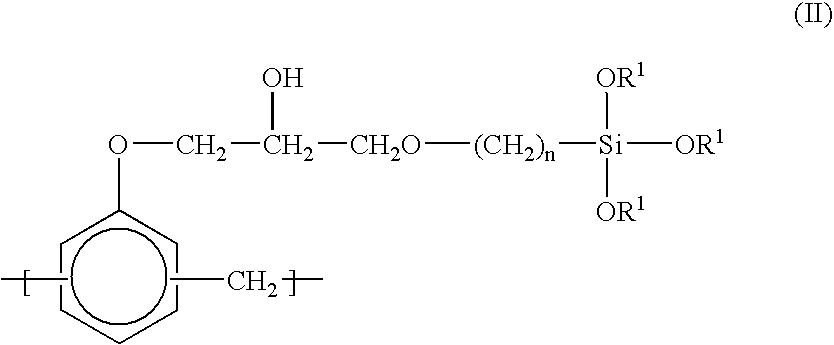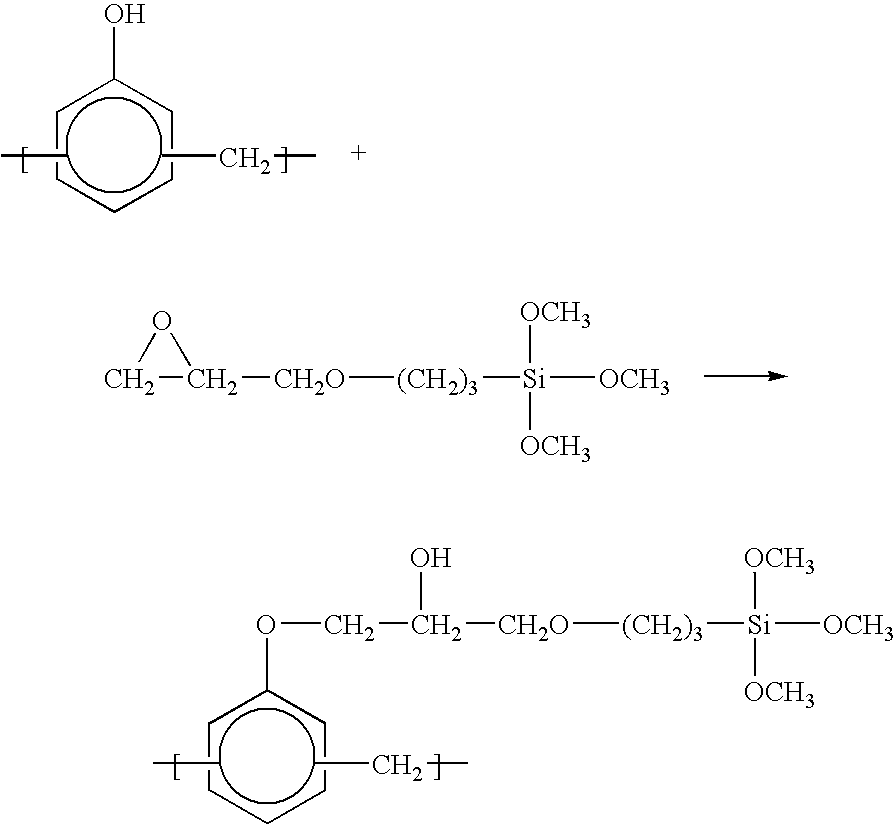Method for preparing a novolac phenolic resin/silica hybrid organic-inorganic nanocomposite
a technology of organic and organic inorganic nanocomposites and phenolic resins, which is applied in the field of novolac phenolic resins/silica hybrid organic organic inorganic nanocomposites, can solve the problems of poor toughness, limited application of phenolic resins, poor mechanical properties, etc., and achieves improved mechanical properties of novolac phenolic resins, improved thermal and combustion properties of the resulting composite materials, and improved thermal stability
- Summary
- Abstract
- Description
- Claims
- Application Information
AI Technical Summary
Benefits of technology
Problems solved by technology
Method used
Image
Examples
preparation example
[0027] 3-Glycidoxypropyltrimethoxysilane (GPTS) was used as a coupling agent to modify a phenolic resin, abbreviated as GPTS-phenolic resin. [0028] 1. A novolac phenolic resin was dissolved in tetrohydrofuran (THF) to form a solution with a solid content of 50 wt %. [0029] 2. GPTS was slowly added to the phenolic solution in 5 phr, 10 phr, and 15 phr (parts by weight per 100 parts by weight of the phenolic resin) so that the epoxy groups on the GPTS and the hydroxy groups on the phenolic resin undergo a ring-opening reaction with a reaction formula shown in the following: [0030] 3. The solution was mixed uniformly with the aid of a magnet stirrer at 70° C. under refluxing to maintain a constant concentration. Meanwhile, an IR instrument was used to monitor the reaction of the functional groups. The reaction was complete in about 20˜24 hours, and a GPTS-phenolic resin solution was formed.
PUM
| Property | Measurement | Unit |
|---|---|---|
| mole ratio | aaaaa | aaaaa |
| pyrolysis weight loss temperature | aaaaa | aaaaa |
| pyrolysis weight loss temperature | aaaaa | aaaaa |
Abstract
Description
Claims
Application Information
 Login to View More
Login to View More - R&D
- Intellectual Property
- Life Sciences
- Materials
- Tech Scout
- Unparalleled Data Quality
- Higher Quality Content
- 60% Fewer Hallucinations
Browse by: Latest US Patents, China's latest patents, Technical Efficacy Thesaurus, Application Domain, Technology Topic, Popular Technical Reports.
© 2025 PatSnap. All rights reserved.Legal|Privacy policy|Modern Slavery Act Transparency Statement|Sitemap|About US| Contact US: help@patsnap.com



